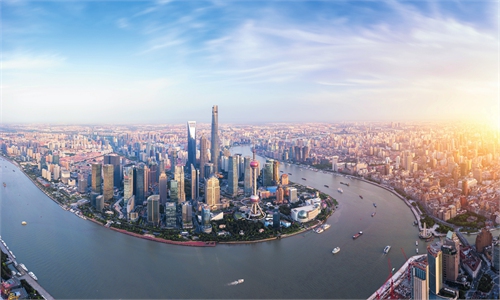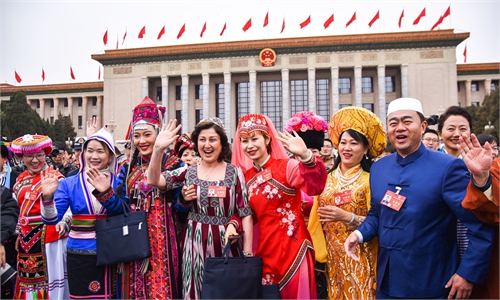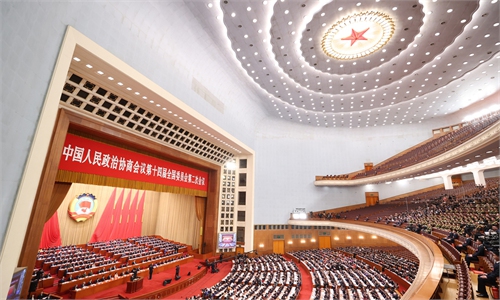ARTS / CULTURE & LEISURE
Positive proposals aim for prosperous culture, sports development
Insightful suggestions
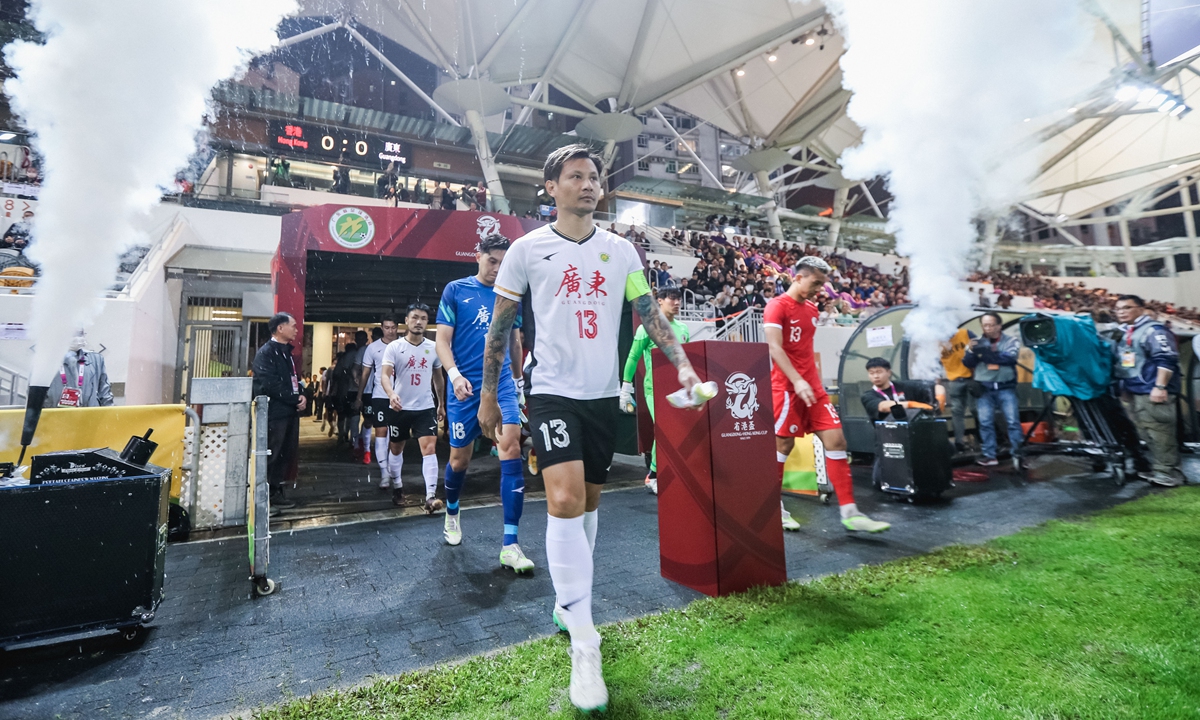
Players walk onto the pitch at the Guangdong-Hong Kong Cup soccer tournament in the Hong Kong Special Administrative Region. Photo: IC
Editor's Note:
Since the introduction of Xi Jinping Thought on Culture in October 2023, culture has been a buzzword throughout China. It plays a vital role in inspiring national spirit, maintaining national identity, and promoting economic and social development as well as well-rounded personal development.
As National People's Congress (NPC) deputies and members of the Chinese People's Political Consultative Conference (CPPCC) National Committee congregate in Beijing for the annual events, many of them have prepared proposals for the nation's cultural development.
A number of legislators and political advisors shared with the Global Times reporters their proposals and suggestions submitted to this year's two sessions.
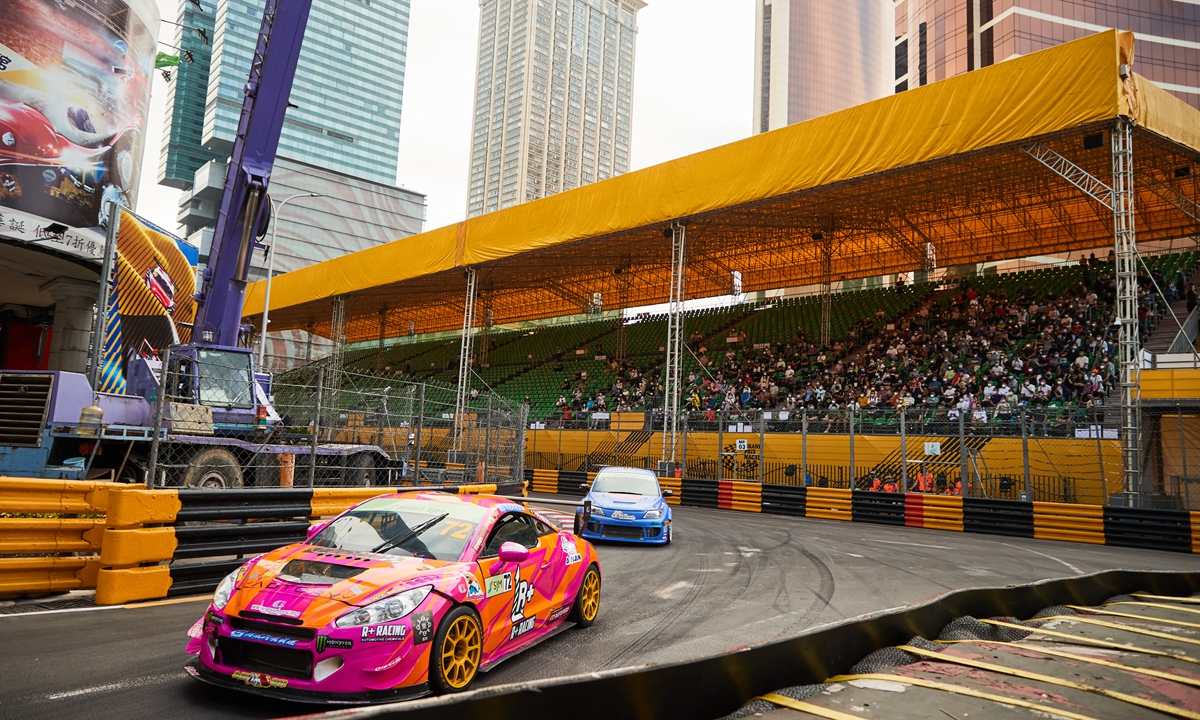
Cars compete in the Macao Grand Prix. Photo: VCG
Invigorate Greater Bay Area with sportsKenneth Fok Kai-kong, a deputy to the National People's Congress from the Hong Kong Special Administrative Region, has outlined a plan to build the "Guangdong-Hong Kong-Macao Sports Bay Area."
The proposal aims to capitalize on the abundant sports resources and competitive advantages within the Greater Bay Area.
The Greater Bay Area boasts a rich list of sports events, ranging from traditional fixtures like the Guangdong-Hong Kong Cup soccer tournament and the Macao Grand Prix motorsport race to emerging disciplines such as break dance and e-sports competitions.
Fok said there is still room for growth, particularly in areas such as attracting top-tier athletes and international spectators. Fok is a Legislative Council member of the Hong Kong Special Administrative Region.
Drawing comparisons with world renowned bay areas like San Francisco and Tokyo, Fok highlighted the need for the Greater Bay Area to enhance its capacity to host large-scale events and attract global talent.
With the upcoming hosting of the 15th National Games by Guangdong, Hong Kong, and Macao in 2025, Fok sees an opportunity to showcase the region's potential as a hub for sports excellence and innovation.
Separately, he has also proposed for a joint bid for the mainland, Hong Kong, and Macao to host the 2031 FIFA Women's World Cup.
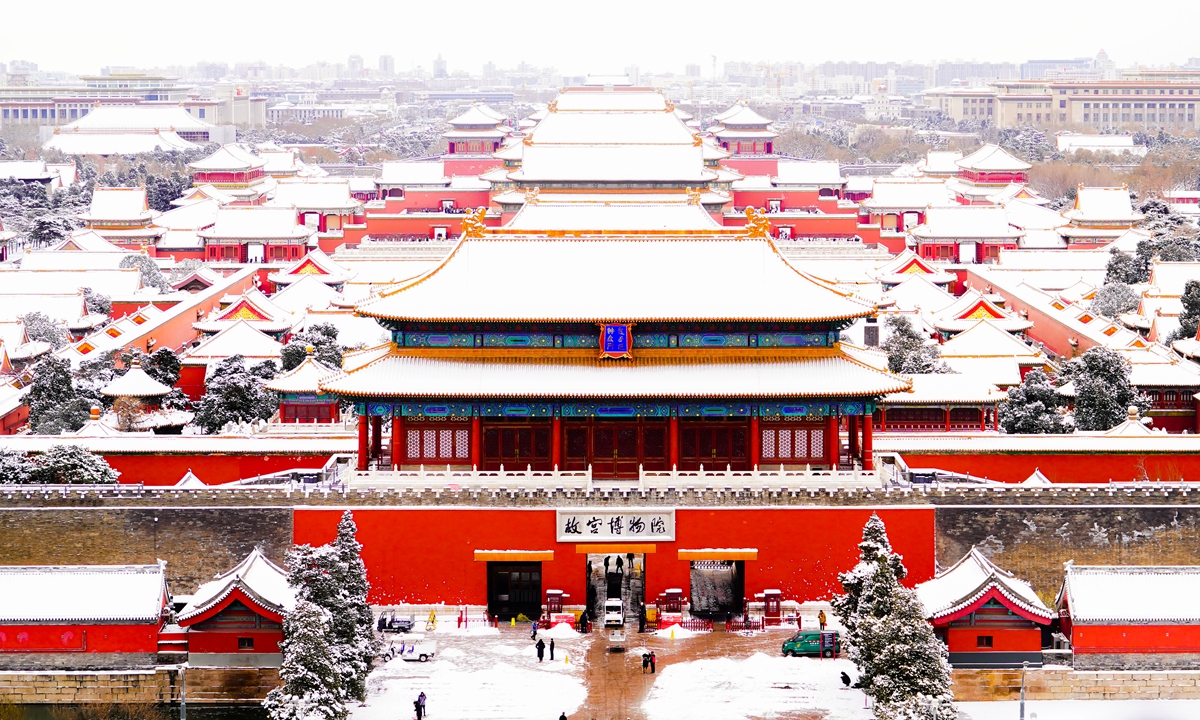
Tourists enjoy the scenery after snowfall at the Palace Museum in Beijing. Photo: VCG
Strengthen cross-Straits ties between palace museumsAn Ting, a member of the 14th National Committee of the CPPCC and chairman of the Beijing Chic-PIA International Culture Development Co, Ltd, is committed to strengthening exchanges and cooperation between the Palace Museum in Beijing and the Taipei Palace Museum.
The two palace museums are important carriers of the spiritual heritage of the Chinese nation, witnessing and inheriting the long history and splendid culture of China. The museums jointly shoulder the mission of retelling China's story to compatriots on both sides of the Straits and transmitting a sense of cultural identity.
Since 2016, there has been no exchanges or cooperation between the two museums.
Establishing a long-term cooperative mechanism between the two museums is conducive to further comprehensively interpreting the value and connotations of the cultural relics preserved in their collections. It is beneficial for promoting cross-Straits cultural exchanges, advancing the joint promotion of Chinese culture and creating new opportunities for the development of cultural service industries across the Straits, An noted in the proposal.
The proposed actions highlighted in the document are as follows:
First, establish a universal ticketing system or offering discounted ticket prices for both museums. By using a ticket for one museum, visitors can enjoy discounted tickets when purchasing tickets for the other. This would not only promote cross-Straits cultural exchanges but also drive tourism consumption.
Second, establish an academic exchange platform for the two museums and encourage researchers from both sides to increase regular academic exchanges, professional training, exhibition planning and cultural heritage protection.
Third, build a cooperative bridge between the two museums. Each year, the two sides should jointly organize one or more comprehensive themed exhibitions in Beijing and Taipei to enhance the public's sense of belonging to the Chinese civilization.
Last but not least, establish an official online platform for the two museums.
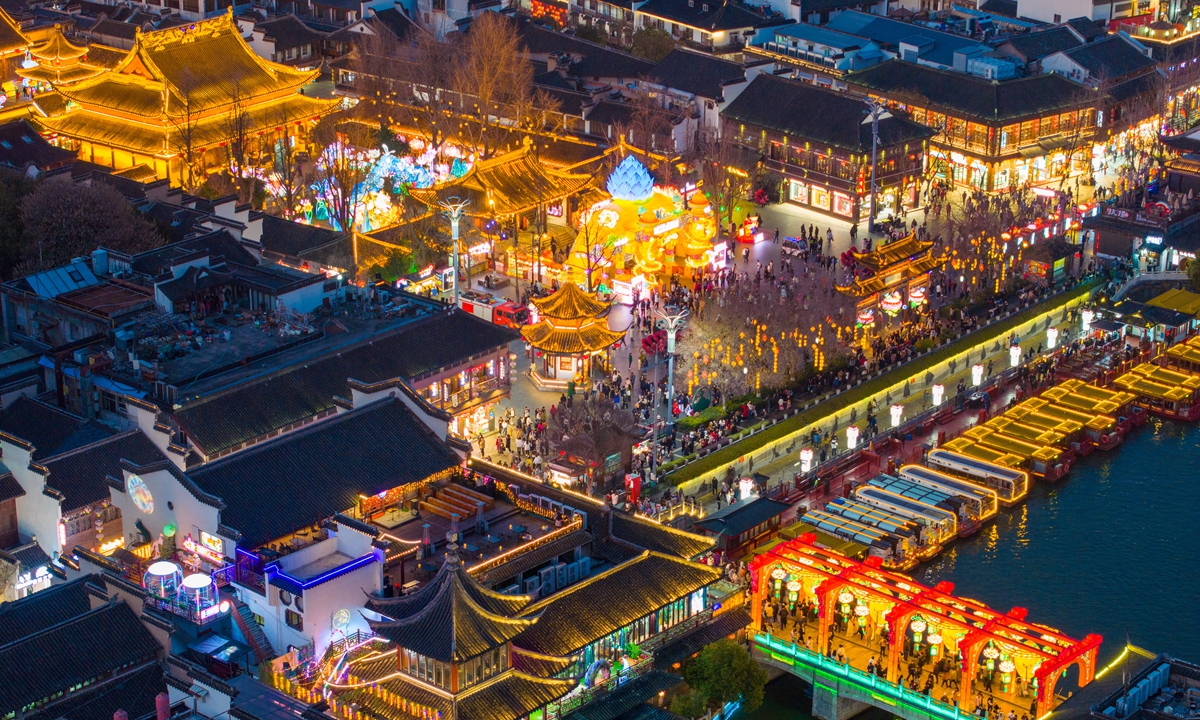
Tourists enjoy the nightlife on the banks of the Qinhuai River in Nanjing, East China's Jiangsu Province. Photo: VCG
Spur high-quality development of new cultural tourismDr Ken Chu, a member of the CPPCC National Committee and chairman of the Mission Hills Group, has put forward a proposal in favor of the high-quality development of new cultural tourism projects.
The Chinese tourism industry showed signs of sustained recovery in 2023. Measures to unleash the potential of tourism consumption and promote high-quality development of the tourism industry issued by the General Office of the State Council in September 2023 offered policy backing for the high-quality development of tourism.
Chu said in a proposal sent to the Global Times that the core of high-quality tourism development lies in increasing the supply of projects and products that continuously attract tourists.
The new projects include live performances, private museums, audio-visual technology-based performances, and immersive experiential entertainment.
These efforts will guide traditional tourism sectors toward interactive upgrades and meeting the evolving demands of tourists, he noted in his three-point proposal.
The proposed ideas in the document are as follows:
First, establish dedicated funds for permanent large-scale live entertainment shows.
Currently, daily large-scale live entertainment shows with fixed venues are widely popular. There are nearly a hundred such shows of different types across the country. These shows play a sustained driving role in attracting visitors to scenic spots and boosting consumption.
The investment required for such shows often reaches as much as investing in a "new scenic spot." Given their international competitiveness, these projects deserve national and provincial policy and funding support.
Second, increase financial support for private museums. According to statistics from the National Cultural Heritage Administration, there are over 6,500 museums nationwide, with more than 1,700 being private museums.
Raise awareness of national community through literary works
Literature, as an artistic form that carries rich human feelings, can contribute to solidifying the awareness of the Chinese national community, which is crucial for the great rejuvenation of the Chinese nation and for the continuous innovation and development of Chinese culture.
In light of this, a political advisor has recommended more literature about the Chinese national community be published, including literature works by overseas Chinese.
CPPCC National Committee member Wang Huiren, chief editor of the Baihua Literature and Art Publishing House, and a member of the Central Committee of the China Association for Promoting Democracy, has proposed aggregating global Chinese writing resources to preserve the nostalgia for Chinese culture found in scattered overseas literature.
He noted that despite living abroad, overseas Chinese retain a soul nurtured by Chinese culture. In the exchange and mutual learning between different cultures and civilizations, overseas Chinese writers possess unique life experiences and means of expression that can benefit the literature of China.
Timely summarizing, researching, presenting, and spreading these Chinese-language literature works from overseas will enrich the literature of China, and help it gain broader and deeper cultural influence.
"This is not only the literary story of individuals but also the literary and cultural story of us as a whole community," Wang told the Global Times in an exclusive interview, giving the example of the late Timothy Tung, a Chinese-American writer who bridged the two cultures by helping introduce US literature to Chinese readers.
Clear barriers for cultural heritage protection
The complex procedures for attaining land use approval may pose an obstacle to the construction of national heritage and archaeological parks, said Ma Xiaolin, director of Henan Museum, during the two sessions. This hurdle may thwart efforts to blend heritage preservation into urbanization.
Ma, a member of the CPPCC National Committee, has been focusing on promoting the high-quality development of national cultural heritage parks for years.
"China's protection and utilization of major heritage sites within the country have achieved remarkable results in both scientific research and protection management. But urgent problems, such as the issues of land use and lack of funding for construction, are the most prominent," noted Ma.
Despite the need for approval processes when it comes to urban construction, the complicated nature of this process has been slowing down the excavation and construction of heritage sites. Reports indicate that obtaining approval for urban construction can take anywhere from one to six months.
In 2022, China expedited the approval process for rural residential and housing construction to a mere 10 days after refining procedures.
During this year's two sessions, Ma has proposed a similar fast-track approach for heritage site construction. His recommendation includes adding a new category for cultural relic land use in the Current Land Use Classification, last updated in 2017, which could streamline current convoluted approval procedures.
Ma also underscored the critical need for adequate construction funding and ongoing operational support for national heritage and archaeological parks. He emphasized the necessity for clarity in government expenditure, such as land acquisition, and urged for increased social investment.
"At the same time, the issues of compensation brought about by the construction of archaeological parks also need to be clarified," Ma said, suggesting a coordinated compensation mechanism for villagers who may have to move during protection work.
